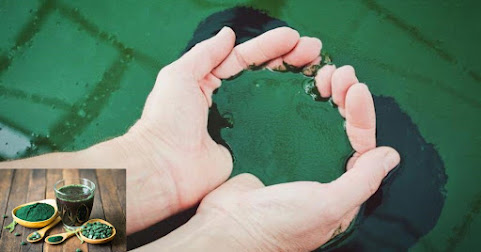Spirulina Quality Control in Mass Production: Ensuring Consistency and Safety
As the demand for spirulina continues to grow, producers face the challenge of maintaining consistent quality and safety in mass production. Traditionally, spirulina farming business has relied on labor-intensive processes that are prone to contamination, varying product quality, and compliance issues. To meet international standards and keep up with market expectations, producers must adopt new technologies and rigorous spirulina quality control practices. Here, we explore the challenges of traditional spirulina farming and how adopting the latest technology and best practices can enhance quality and safety.
Challenges in Traditional Spirulina Production
Labor-Intensive Processes: Traditional spirulina
farming is highly labor-intensive, requiring manual oversight for every stage
from cultivation and harvesting to drying and packaging. This not only slows
down the production process but also increases the risk of human error, which
can compromise product quality. The high labor requirement also raises
production costs, making it difficult to scale up efficiently while maintaining
quality.
Contamination Risks: In open-system cultivation,
where spirulina is often grown in outdoor ponds, there’s a significant risk of
contamination from bacteria, fungi, and other impurities. Maintaining strict
hygiene standards is challenging in these environments, leading to potential
safety issues in the final product. Ensuring that spirulina is free from
contaminants is essential, as even minor contamination can affect product
quality, safety, and consumer trust.
Inconsistent Quality: Variations in environmental conditions, such as temperature and light exposure, can result in inconsistent spirulina quality. In traditional methods, it’s difficult to control these factors, leading to fluctuations in the nutritional content and appearance of the final product. For consumers and businesses that depend on a reliable, high-quality source of spirulina, these inconsistencies are unacceptable.
Compliance with International Standards: Meeting
international quality and safety standards, such as those set by the FDA, EU,
and WHO, is essential for spirulina producers looking to sell their products in
global markets. Traditional methods may struggle to maintain the consistency
and documentation required for certifications like Good Manufacturing Practices
(GMP) and Hazard Analysis and Critical Control Points (HACCP). Failing to
comply with these standards can limit market access and impact a brand’s
reputation.
Advanced Solutions for Quality Control in Spirulina
Production
To overcome these challenges, spirulina producers can
implement advanced technologies and practices that ensure consistent quality
and safety in mass production.
Adopting the Latest Technology: Utilizing automated
systems for spirulina farming reduces the need for manual labor, minimizes
contamination risks, and improves overall process control. Closed-system
cultivation, for example, allows for strict control over environmental
conditions, resulting in a cleaner, more consistent product. Automation also
allows for continuous monitoring, which helps maintain quality and identify
potential issues early on.
Implementing GMP and HACCP Standards: Adhering to
Good Manufacturing Practices (GMP) and Hazard Analysis and Critical Control
Points (HACCP) is essential for ensuring high-quality spirulina
production. GMP standards provide guidelines for proper hygiene, equipment
maintenance, and quality assurance, while HACCP focuses on identifying and
managing critical points where contamination could occur. By following these
frameworks, spirulina producers can ensure that every batch meets safety and
quality requirements, building trust with consumers and enabling market
expansion.
Using High-Quality Feed: The quality of spirulina
depends greatly on the nutrients it receives during cultivation. Using
high-quality, specially formulated feeds can enhance nutrient absorption,
improve the growth rate, and ensure a nutrient-rich final product. Organic,
nutrient-rich feeds not only support the growth of healthy algae but also
ensure that the spirulina is free from harmful chemicals and additives, meeting
both consumer expectations and regulatory standards.
Temperature-Sensitive Drying Techniques: Drying is a
critical stage in spirulina
production process, as improper drying can degrade the nutrients and reduce
product quality. Traditional drying methods, which often involve high
temperatures, can destroy sensitive compounds in spirulina, such as proteins
and antioxidants. By using temperature-sensitive drying technologies, such as
refractive window drying and vacuum drying, producers can retain the
spirulina’s nutritional value. These methods ensure that the final product is
consistent in quality, preserving essential nutrients and colors, and meeting the
high standards expected by consumers.
Curious to learn more? Discover the latest technologies,
best practices, and advanced techniques to revolutionize spirulina farming.
Read the full article on our website: Click
here to continue reading.




Comments
Post a Comment